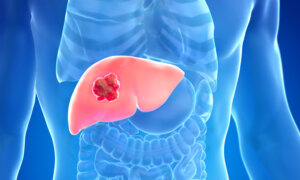Modern lifestyles—packed with processed foods, chronic stress, and restless nights—create the perfect environment for candida, an opportunistic fungus, to thrive. At the heart of the issue lies a disrupted gut microbiome, where the balance between microorganisms has been tipped in favor of overgrowth.
By identifying the factors that fuel microbiome disruption and implementing strategies to restore balance, you can reduce the fungal load and experience much-needed relief.
“If the gut is unhealthy, candida can overgrow and contribute to a weakened immune response,” Mpho Tshukudu, a functional nutritionist, told The Epoch Times.
Imbalanced Gut
Candida is a type of yeast naturally present in the human body, particularly in the digestive tract and vaginal area, where it typically exists harmlessly. However, when conditions favor its overgrowth, it can become problematic, causing fungal infections that range from superficial and localized—such as oral thrush and yeast infections—to systemic and potentially life-threatening infections, such as sepsis, a blood infection.
A disrupted gut microbiome can damage the protective lining of the gut and impair immune function, creating an environment where candida can spread from the gut to vital organs and systems, including the skin, kidneys, and mouth. This makes gut health an important factor in preventing candida infections.
Is Diet to Blame?
“Many factors can lead to an unhealthy gut,” Amy Bragagnini, a registered dietitian, told The Epoch Times.
A Western diet that is low in fiber and high in processed fats and added sugar is a major factor, as these foods cause inflammation over time and reduce healthy gut bacteria, making it easier for candida to grow, she said.
The processing of Western foods often involves adding preservatives, heating, and hulling—the removal of the outer coat of grains or seeds—all of which affect the microbes in the food. While these processes help reduce spoilage and harmful bacteria, they also strip away beneficial bacteria essential for controlling candida levels.
In addition to processed foods, artificial sweeteners such as aspartame along with yeast, antibiotics, mold, and even chronic stress can contribute to fungal overgrowth, Tshukudu said.
Similarly, lifestyle habits such as excessive alcohol consumption, smoking, lack of exercise, and poor sleep further disrupt gut health, creating an environment that favors fungal overgrowth.
Strategies to Reduce Fungal Load
To effectively reduce fungal load, it’s important to avoid the pitfalls that disrupt gut health and to implement targeted strategies to reduce fungal overgrowth.
It has been shown that eating a diverse diet rich in micronutrients, prebiotics, probiotics, fermented vegetables, omega-3 fatty acids, and fiber can help reduce fungal species in the gut.
“Balance is the key to a healthy microbiome, which is crucial for controlling overgrowths like candida,” Bragagnini said.
Besides eating a balanced diet, certain foods have also been shown to combat fungal overgrowth. For example, polyunsaturated fatty acids—found in fatty fish, walnuts, chia, and flax seeds—are known to help fight candida yeast.
Freshly crushed garlic also has antifungal properties and can slow fungal growth by inhibiting an important enzyme and creating small pits on the outer surface of candida. Garlic also prevents candida from transforming into its more harmful form and reduces the expression of the gene SIR2 involved in this process.
Cinnamon and other essential oils have also been shown to be effective against candida.
Anti-Candida Diet
In addition to natural remedies, an anti-candida diet could play an important role in controlling fungal overgrowth. This diet focuses on reducing the growth of candida yeast, which can act as a fungus when it overgrows.
The anti-candida diet limits carbohydrate and added sugar intake, as sugar fuels the growth of candida. It also involves avoiding yeast-containing foods, such as baked goods, yeast-leavened breads, alcohol, and vinegar—except for raw apple cider vinegar. Other foods to avoid include soy sauce, tempeh, miso, malt, nutritional yeast, and foods with high mold contamination potential, such as peanuts, cashews, and aged or moldy cheeses, Tshukudu advised.
It’s also important to stay hydrated and include cruciferous vegetables—such as kale, cabbage, and cauliflower—and black and blue foods, including berries and eggplant, which can help support the body in detoxing, Tshukudu said.
When addressing candida overgrowth through an antifungal diet, some people may experience a die-off reaction as the yeast cells release toxic byproducts during the process of being killed off. This reaction can lead to symptoms that include increased gas, bloating, changes in bowel habits, light-headedness, headaches, and muscle or joint pain and stiffness. Symptoms typically last for a few days to a week as the body adjusts, said Tshukudu.
Sample Antifungal Meal Plan
Tshukudu shared an example of what a typical day on an antifungal diet could look like.
Upon Waking: Start your day with herbal tea or water. Good options include mint, ginger, cinnamon, or clove tea.
Breakfast: Eat 2 to 3 scrambled or poached eggs alongside 1 cup of sautéed spinach cooked with garlic in 1 teaspoon of coconut oil or extra-virgin olive oil. Add 1 slice of seed crackers or seed bread. Enjoy a cup of herbal tea, such as ginger and turmeric or mint.
Midmorning Snack: Have a small serving of seed granola with 1/2 cup of plain yogurt. Sip an herbal tea such as rooibos flavored with cinnamon.
Lunch: Eat grilled chicken with roasted broccoli and cauliflower. Drizzle the vegetables with apple cider vinegar, extra-virgin olive oil, and a garlic-herb dressing. Drink water infused with fresh mint and cucumber.
Afternoon Snack: Enjoy chia pudding made with coconut milk or cream. Add 2 tablespoons of coconut milk or cream, along with cacao powder or nibs, cinnamon, aniseed, and vanilla.
Dinner: Have steak served with sautéed zucchini, peppers, and onions. End the day with a cup of chamomile tea.









